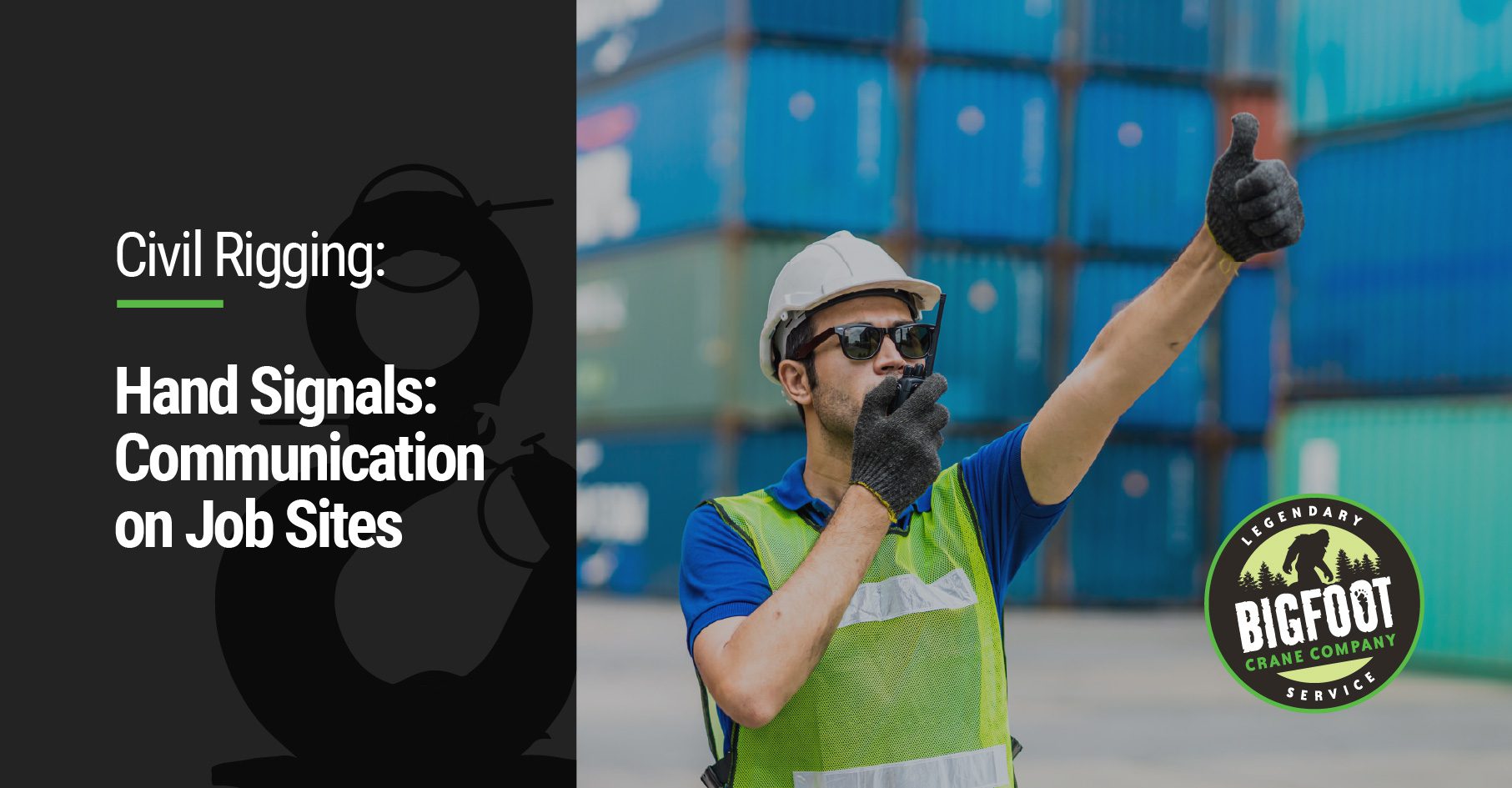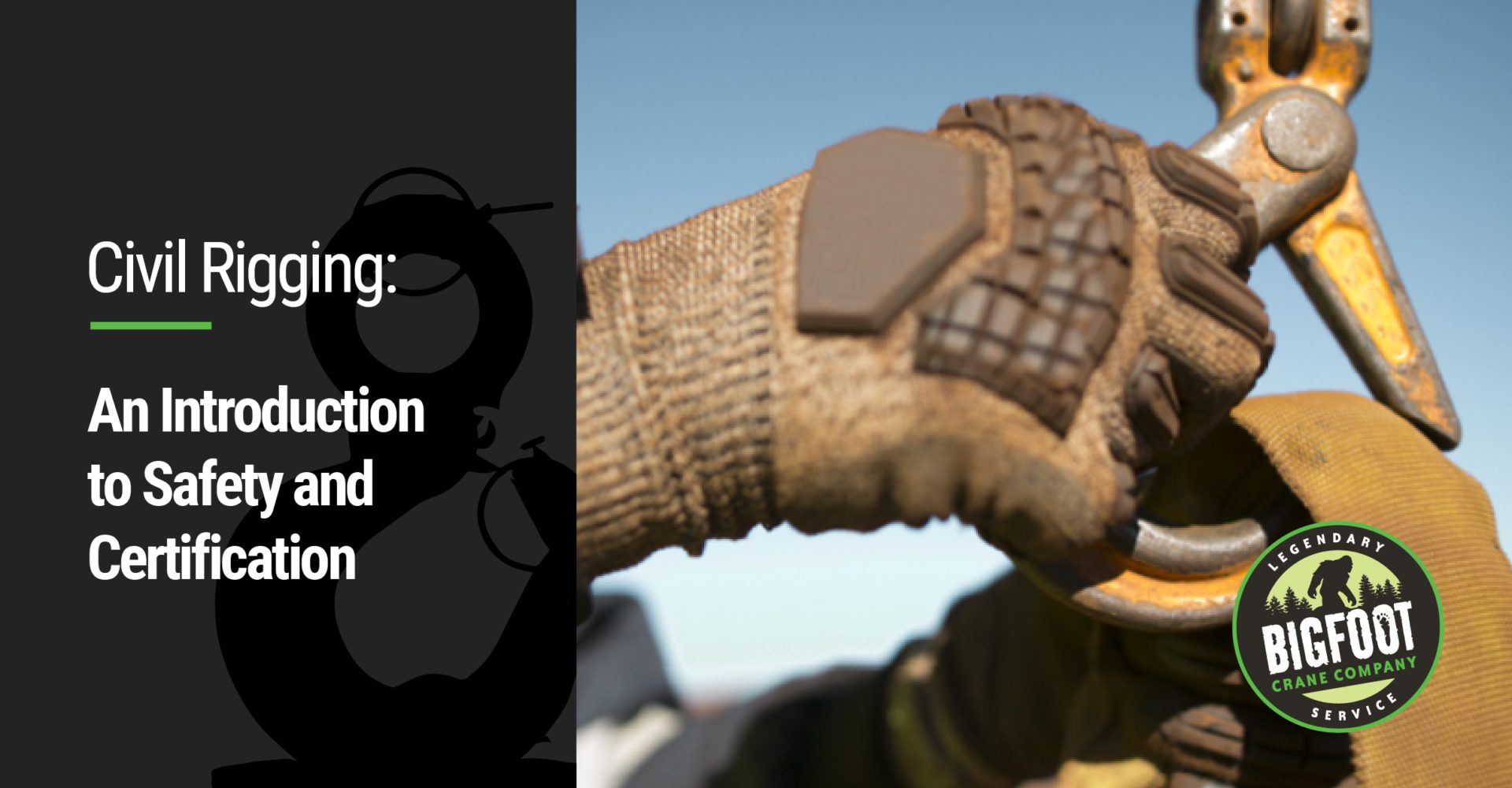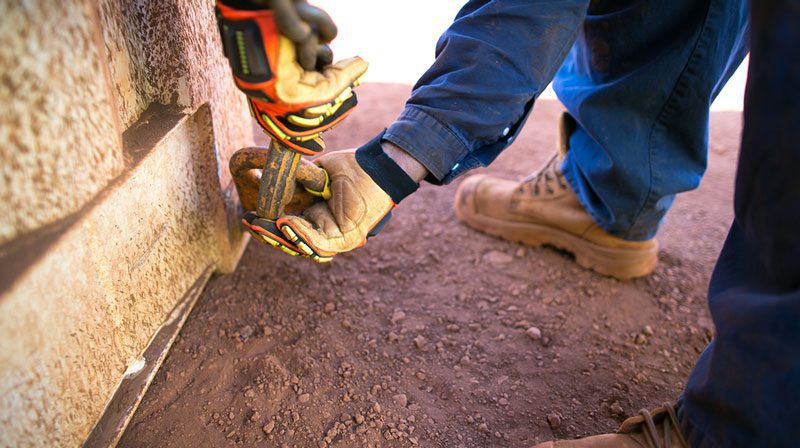After a rigger determines the weight of a load, the next critical step in planning a safe and successful lift is determining the centre of gravity (COG). If the COG is not directly below the hook, the result will be an unstable…
Determining Weight for Civil Rigging

One of the rigger’s most important tasks is determining weight for civil rigging, specifically the weight of the load. This is the first critical step in planning a successful and safe lift.
Do you know the three basic ways that riggers determine weight?
According to Ralf Notheis, Manager of Bigfoot Crane Academy, only the third way requires math skills. “Sometimes the weight of loads is already supplied to the rigger,” says Notheis, “either marked on the load itself or in the paperwork, such as blueprints, spec sheets, or manuals.”
However, every rigger must have the skill to measure a load by simple math, whether in cubic feet (Ft3), square feet (Ft2), or linear feet (Lf).
Of course, different materials, such as concrete, steel, or wood, are weighted differently and must be calculated accordingly.
Calculating the weight of unique objects such as concrete pipes provides a unique challenge, which emphasizes that the well trained rigger must be fluent in the necessary equations.
As with all civil rigging training, the emphasis is on being practical and staying safe. Everything a rigger needs to learn about determining weight is provided in a way that makes sense on the job. The trainers help to create a good environment for learning so that the rigger can grow in confidence and be ready for the challenges of their work.
To learn more about how determining weight for civil rigging, so that you can confidently lift them, enroll in our Civil Rigging Course by clicking the button below.
Sign Up Now

Crane Hand Signals
Clear Communication on Job Sites – Civil Rigging
Why are crane hand signals for clear communication on job sites so important for Civil Rigging?
Knowing the correct crane hand signals and how to properly communicate them can mean the difference between safety and injury on the job.
According to Ralf Notheis, Manager of Bigfoot Crane Academy, “Miscommunication is dangerous and has been the root cause of countless accidents on jobsites. But with proper training, many of these costly and dangerous mistakes can be avoided.”
Anyone who has been on a busy and noisy worksite knows the essential importance of hand signals. For the safety of everyone on site, riggers need to be able to communicate clearly with the equipment operators in a way that ensures understanding. Both parties need to be proficient in a common language and they need to give each other their careful attention as they go about their work. Effective communication between riggers and operators using recognized signals is crucial.
Notheis emphasizes that clarity is critical, which means that an operator must never move equipment based on an unclear signal.
“There are some very practical ways to help ensure clear communication through hand signals,” says Notheis, “such as wearing tight-fitting gloves and positioning hands so they are more visible to the operator.”
No matter what kind of heavy machinery you’re working with, learning how to effectively use correct hand signals is essential.
To learn more about how to communicate clearly on a job site, check out our Civil Rigging Course by clicking the link below.
Sign Up Now
Civil Rigging Terminology

Why is it so important to understand terminology for Civil Rigging?
Because every piece of equipment serves a special purpose and contributes to a safer and more efficient work environment.
Ralf Notheis, Manager of Bigfoot Crane Academy explains, “When a qualified rigger asks for a shouldered eye bolt and another worker hands them a shoulder-less eye bolt, they can tell the difference and insist on the right hardware to complete the lift safely.”
In civil rigging, there are many different types of hooks, clutches, slings, and shackles that are commonly used on job sites. Do you know the difference between a grab hook with a cradle and a regular grab hook?
In addition to hardware, there are several types of underhook attachments, each related to very specific tasks. Are you familiar with the safety factor your underhook attachments must have?
To maintain the safe usage of underhook attachments, each piece of equipment must display at least five items of technical information related to their identity and performance. Do you know what those five items are?
Beyond hardware and underhook attachments, slings are the third main area that require a good understanding of terminology. There are four common types of slings, which again, all have their own unique functions. Whether they’re made of chain, wire rope, or synthetic material, each of these sling types can be depended upon to do the job that they were designed to do when used correctly.
“That’s one of the primary goals of this course,” says Notheis, “to train riggers to a level where they know the terminology and they properly understand their equipment.”
To learn the language of civil rigging terminology, so that you and your crews can go home safely every night, enroll in our Civil Rigging Course by clicking the button below.
Sign Up Now
An Introduction to Civil Rigging

Why is the Bigfoot Crane Academy offering an Introduction to Civil Rigging Course? Just ask Ralf Notheis, Manager of the Academy.
“There is a huge need for this,” says Notheis, who speaks with passion. “There are way too many workers out there who are inadequately trained to do what they’re doing. They’re taking unnecessary risks with their lives every day.”
When talking to this professional, it doesn’t take long to figure out that he is very dedicated to one thing: safety.
Bigfoot’s Civil Rigging Course offers essential safety training for any construction worker or civil worker whose job involves lifting loads.
Notheis is thrilled that more and more riggers are becoming qualified through Bigfoot’s training, but he also knows that very soon qualification will not be enough. According to Notheis and other industry authorities, the time is quickly coming that every rigger will need to be certified.
“When that requirement comes,” Notheis projects, “we’re not talking about hundreds of people that will need training, but thousands, maybe even tens of thousands.”
This course gives owners and managers an opportunity to become industry leaders, it gives safety officers an opportunity to create the best work environment possible, and it gives workers the opportunity to do their job confidently and go home safe every night.
To stay ahead of the curve on safety and certification, learn more about our Civil Rigging Course by clicking the button below.
Sign Up Now
Bigfoot Academy Courses are Tried, Tested, and True.

During the past two years, Bigfoot Academy Courses’ have been tried, tested, and found true in major cities in Canada with specialized rigging training for all of their civil workers. In the process of training hundreds of workers, Bigfoot has garnered valuable feedback from participants and improved critical aspects of the course.
Today, the course is being offered as a one-day (eight-hour) training experience, which is always a mixture of classroom learning and onsite coaching. Bigfoot’s Academy is providing some of the best training experiences in the industry.
Sign Up Now
The goal of Bigfoot’s Civil Rigging Course is to educate the untrained worker. The course focuses on the proper use of equipment, on lifting practices, and on the potential hazards of the work environment. Eighty percent of rigging failures are…

Our training is well known for being practical, helpful and engaging. Our instructors have years of on-the-job experience and they combine their knowledge with a passion for teaching, which comes out clearly in the format of the training.
“We teach theory and practical,” says Ralf Notheis, Manager of Bigfoot’s Academy, “so that means we spend some time in the classroom, then we get out on the job, in the rain and in the mud with our gloves on, to make sure it works in real life. We don’t just tell people what they need to know, we show them why they need to know it.”
Sign Up Now

Civil workers are not the only ones who benefit from better training in civil rigging.
Effective training not only prevents accidents and ensures safety for workers, but it also relieves the legal and corporate pressures of negligence on the part of managers and owners.
Whether it’s safety risks, damage risks, legal liabilities, or loss of work, the cost of accidents is enormous.
Untrained and unqualified managers can be a major liability to construction companies and city work crews.
Bigfoot’s Civil Rigging Course is for supervisors and foremen as well as workers. Everyone needs to understand the value of this training.
Sign Up Now

“The Civil Rigging Course helps workers move loads safely. Really, it’s for anyone who does any kind of mechanized lifting, using equipment like excavators or backhoes to move loads into place. Ideally, we want to make this course available to every civil works crew and every construction company in Canada—it’s that important.”
– Ralf Notheis, Manager of Bigfoot’s Academy.
Bigfoot’s training for civil riggers empowers workers with knowledge so that they can be confident on job sites. With adequate training, they can perform their work with the kind of self-assurance and professionalism that is required in a high-risk environment.
Sign Up Now
Receive Industry Updates
Contact
Bigfoot Crane Company Inc.
TSBC License: #LED0205236
2170 Carpenter Street
Abbotsford, BC V2T 6B4
Toll free:
Local:
Fax:
Email:









